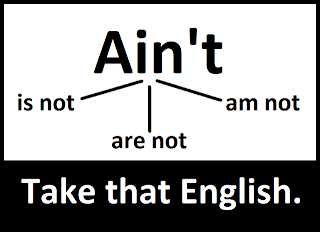1. I learned that by not expecting students to lose their dialect, and having them understand the difference between how they talk and how they should write in Standard English, can actually help them use proper Standard English better. By having the students learn the similarities and differences between how they speak and Standard English can help them learn code-switching. This way students will know how they can talk in different situations. I also learned that letting students use their dialect in the classroom can actually help them be successful. Student's do not like to be corrected all the time so if a teacher is focusing more on their answer than on how they spoke, the student may feel like they can answer questions more often and become more involved in class. Teachers also tend to copy pedagogical instruction and teach their students how they were taught but this is not always the right way to teach. A lot has changed over the years and there are new and better ways to teach things.
2.In the article it says that you should acknowledge the similarities and differences of the student's dialect with Standard English, this would be building bridges of meaningfulness between home and school experiences. I also saw where the students could inquiry on the patterns of how their dialect started in their families or the local area. This could be a class project and it will get the community involved as well. Also by doing these things, the teacher is acknowledging that their dialect is legitimate and worthy of being taught within the curriculum.
3.I honestly cannot remember much of my years in elementary school, middle school, or even high school. I know my English classes in high school were a joke. We did a lot of reading and study guides, maybe a few papers. My freshmen year in English class, we didn't even have enough books for the whole class so a group of five of us had to share one textbook. All I can remember is reading, there was very little English involved. I can remember the teacher saying "ain't ain't a word!". From that saying right there, I don't think my instruction was very culturally responsive.
I think this reflects culturally responsive teaching because if this word is in a child's dialect, let them say it but then let them know their options of when they should use proper English.
Subscribe to:
Post Comments (Atom)

No comments:
Post a Comment